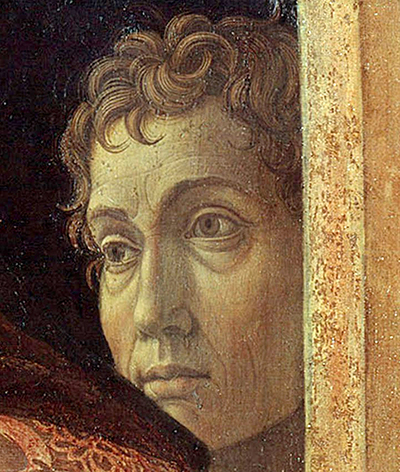Andrea Mantegna was a highly skilled Italian painter from the 15th century whose life and career was heavily intertwined with the equally successful Bellini family.
Introduction
Italian art during this period and several centuries either side would dominate Europe, forcing many notable names from across the continent to spend time in the Papal States studying the latest styles and artistic techniques. Albrecht Durer was one such artist and is known to have studied several Andrea Mantegna engravings in detail. Durer would reproduce several of them before returning to Italy for a second visit several years later.
Relationship with the Bellini Family
Mantegna and the Bellini artists would be highly influential in the inception of the Venetian school of painting, which would gift us some of the most exceptional artists in European art history. Both ran large studios of artists who at times would help out on larger projects. Andrea would also turn tutor when time allowed.
Influences
A young Mantegna would draw influence from Roman and Greek antiquities via his first tutor, a painter from Padua named Francesco Squarcione. This apprenticeship pricked his interest in classical styles and this was to remain a part of his own work right across his career.
Squarcione's school took in a whole host of artists, not just in the immediate surrounding areas of this Papal State. Its reputation was strong enough to attract the likes of Paolo Uccello, Filippo Lippi and Donatello all the way from Tuscany. Mantegna would become one of his most favourite pupils and was taught Latin as a direct reward. The budding painter would move on, however, at the age of 17 in order to forge his own artistic path.
The early years of his career would be spent working in collaboration on large frescos and altarpieces, such as the Ovetari Chapel of the church of the Eremitani. This was not a significant change to his earlier work at Squarcione's school where numbers of artists would work together in order to collectively improve their skills and also share ideas.
Further early works that were completed individually were saints around the entrance of the church of Sant'Antonio in Padua. There was also an altarpiece for the church of Saint Giustina which can now be found in the Brera Gallery in Milan. It was around then that the Bellini connection would make its way into Andrea's life, gifting him more artistic tutorship, connections with other likeminded artists and, finally, a wife (Nicolosia married Mantegna in 1453).
This influence would pass both ways, with the early work of Giovanni Bellini (also tutor to Titian) displaying clear similiarities with elements of the style of his brother-in-law Andrea. Equally, they shared an interest in more classical art, archeology and architecture, giving them a common ground from which to express ideas.
Extravagant Lifestyle
The lifestyle of Mantegna was at times lavish, struggling with financial displine that would occassionaly place his in awkward positions. It was therefore more of a necessity for him to work continuously throughout his life, in order to ensure that bills could be paid on time.
The artist would also need regular work in order to finance his large studio. Of those who came through his tutorship, the best known would be Bonsignori and Caroto, although his son Francesco also received training here. Many art historians consider Andrea's talents to lie most signficantly in etching, more so than painting and his legacy in that medium was undoubtably strong.




